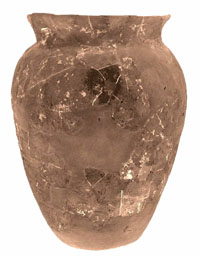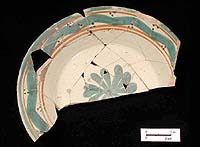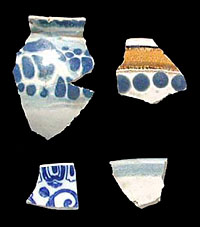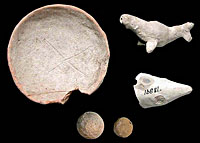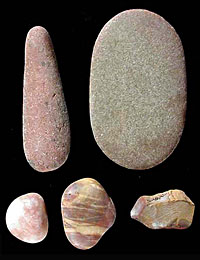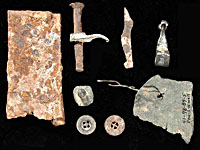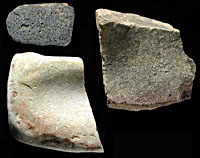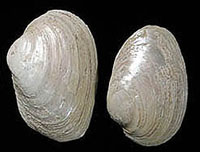Artifacts
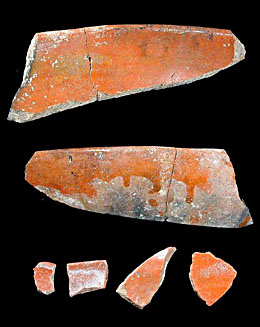
|
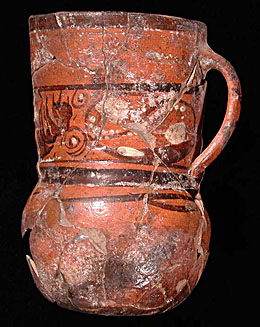
|
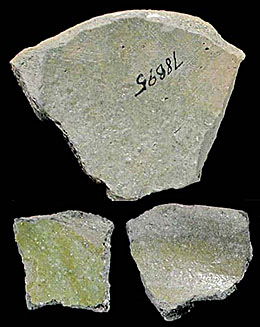
|
|
A group of smooth, oval-shaped stones is somewhat unusual; the purpose or use for these is unknown. Some look like hammerstones used for making chipped-stone tools, but they have no impact marks on the edges or tips. Most are flat, round or oval in shape, and vary in size from 2 to 10 cm. All are hand-sized and may have been used as smoothing stones for making pottery. During the pottery-making process, potters typically smooth the surfaces of clay vessels with a stone to even out the thickness and create a burnished surface before firing the pot. On the other hand, the stones may have been gaming pieces. Metal artifacts were scarce, but several pieces of iron and scraps of copper were found; these may have been used to repair copper pots or other items. Some of the iron fragments may have been gun parts. A few tacks were found but no nails or other construction materials were found, which is unusual for a site with existing buildings. In the midden and in the house floors, investigators uncovered a large quantity of mussel shell, animal bones (cow, horse, sheep, and javelina), and charred corn cobs. These items give us an idea of what the diet of these early ranchers may have been as well as indications of their resourcefulness. Mussels may have been a food source in hard times, but the shell itself was probably used to make lime. Lime was an ingredient in making plaster and mortar, and it also probably was used to repair cracks in pottery. The photographs of artifacts on these pages were taken by Milton Bell. Artifacts and records of the Leal rancho excavations are housed at TARL. |
|
